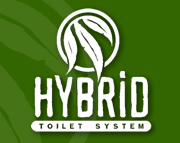MicroFlush Hand Pump
Installation Instructions
Drawings
 Hand Pump Installation GTL-0000-22 (Rev A) Hand Pump Installation GTL-0000-22 (Rev A)
- This is a generic instruction that refers to all unit sizes.
- There may be slight variations from model to model.
- Refer to Drawing
 GTL-0000-22 (Rev A). This is a generic drawing that shows the location of the connection points, layout and route of the suction and delivery hoses. GTL-0000-22 (Rev A). This is a generic drawing that shows the location of the connection points, layout and route of the suction and delivery hoses.
- Layout the components on the floor and familiarise yourself with all the components that are shown on the drawing.
- The suction inlet hose will already be installed through the floor as per the pedestal installation instructions.
General Instructions
Proceed as follows:
- Locate the pump housing. Determine the best position to install this pump housing. They are normally installed on the back wall of the cubicle on the right hand side when you are facing the pedestal.
- Note the markings on the tubes showing the suction and delivery lines. In the floor, drill a hole of sufficient size to pass both lines freely without kinking through the floor.
- Feed the hoses through the floor and position the pump housing and fix to the wall with the fixings provided.
- Once you have completed this, determine the best position to mount the cistern. The maximum lift the hand pump is capable of is 1.5m. This means the distance from the top of the pump housing to the bottom of the tank can be no more than 1.5m. The cistern may be mounted higher than the pump. The cistern must be mounted in the upright position and fixed securely to the mounting point.
- Locate the pump suction line. If the cistern is installed below the rim of the pedestal, the non-return valve must be installed between the pump and the cistern and as close to the cistern as possible.
- If the cistern is above the pedestal rim, the non-return valve must be installed between the pump and the pedestal.
- If you have a multiple pedestal installation, you will note that there are multiple connection points available in the bottom of the cistern.
- Using the hose supplied, complete the connections to all of the pedestals. Where required, support the hose fixing with the clips provided.
- All points should now be connected and the installation ready to be primed. Check to ensure that connections are tight. Any air leaks will result in the system or part of it loosing its prime.
- Begin to prime the system by operating the pump handle until water is seen flushing without air locks into the pedestal. Do this to all pumps in the system. Once this is done, again check the system for any water leaks. The MicroFlush system should now be ready for operation.
Trouble shooting
If you are unable to lift water to the pump, check the following:
- Have you filled the cistern?
- Are all connections tight and not leaking air? If there is an air leak, the pump will not lift the water.
- Check the hose lines to ensure there are no kinks in the lines.
- If you still cannot lift the water, check the direction of the flow arrow on the non-return valve. The arrow must be pointing in the direction of the water flow.
- If this is correct, ensure that the hoses from the pump are connected correctly. The suction line from the pump must be connected to the cistern. The suction line from the cistern must be connected to the front outlet of the pump when you look up from the bottom of the pump housing.
- If no water can be lifted on any of the pumps, check to see that the inlet point in the cistern is not fouled.
In the event of further problems, please contact your system supplier for further advice. If you have any comments to add as to how to improve this instruction and installation, please forward this information to your supplier also. It is only by your response that we are able to improve. |
